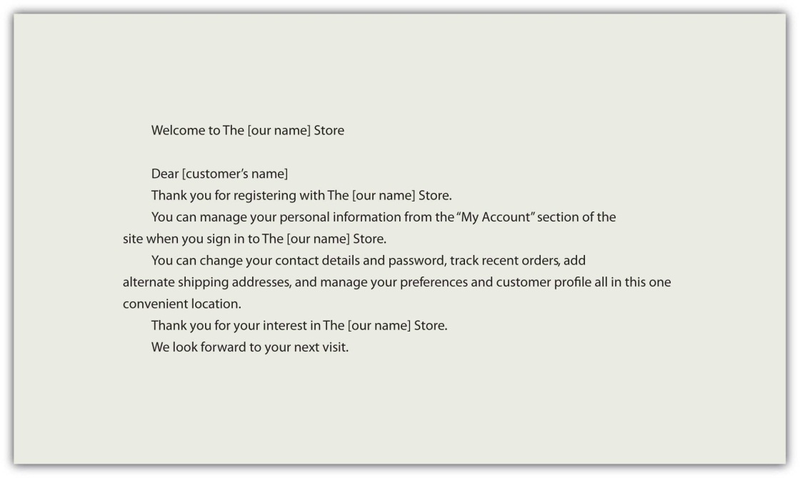Available under Creative Commons-NonCommercial-ShareAlike 4.0 International License.
- Proper salutations should demonstrate respect and avoid mix-ups in case a message is accidentally sent to the wrong recipient. For example, use a salutation like “Dear Ms. X” (external) or “Hi Barry” (internal).
- Subject lines should be clear, brief, and specific. This helps the recipient understand the essence of the message. For example, “Proposal attached” or “Your question of 10/25.”
- Close with a signature. Identify yourself by creating a signature block that automatically contains your name and business contact information.
- Avoid abbreviations. An e-mail is not a text message, and the audience may not find your wit cause to ROTFLOL (roll on the floor laughing out loud).
- Be brief. Omit unnecessary words.
- Use a good format. Include line breaks between sentences or divide your message into brief paragraphs for ease of reading. A good e-mail should get to the point and conclude in three small paragraphs or less.
- Reread, revise, and review. Catch and correct spelling and grammar mistakes before you press “send.” It will take more time and effort to undo the problems caused by a hasty, poorly written e-mail than to get it right the first time.
- Reply promptly. Watch out for an emotional response—never reply in anger—but make a habit of replying to all e-mails within twenty-four hours, even if only to say that you will provide the requested information in forty-eight or seventy-two hours.
- Use “Reply All” sparingly. Do not send your reply to everyone who received the initial e-mail unless your message absolutely needs to be read by the entire group.
- Avoid using all caps. Capital letters are used on the Internet to communicate emphatic emotion or yelling and are considered rude.
- Test links. If you include a link, test it to make sure it is complete.
- E-mail ahead of time if you are going to attach large files (audio and visual files are often quite large) to prevent exceeding the recipient’s mailbox limit or triggering the spam filter.
- Give feedback or follow up. If you don’t get a response in twenty-four hours, e-mail or call. Spam filters may have intercepted your message, so your recipient may never have received it.
Let’s look at two examples of business e-mail. In the following Figure 14.1, we have an e-mail form and a letter written specifically for the situation and audience.

Figure 14.1 An e-mail form example

Figure 14.2 A letter example
- 瀏覽次數:3194






